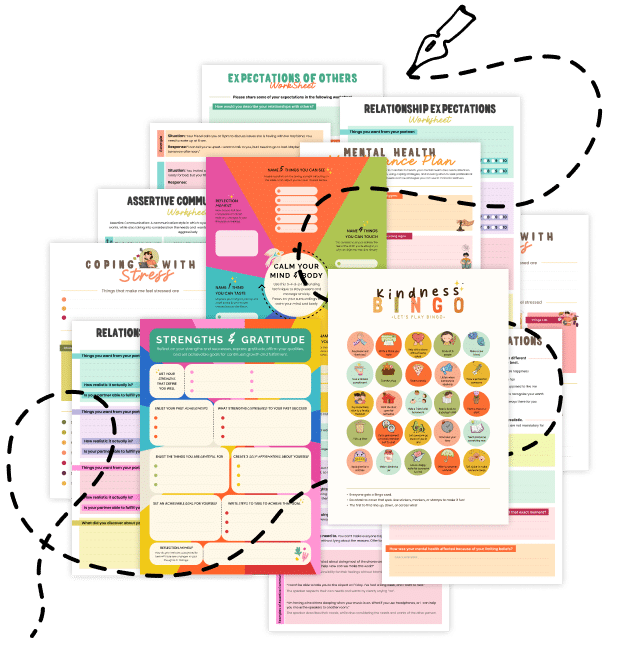20 Things About Somatic Quieting Techniques
Somatic Quieting Techniques are methods that help you calm your body and mind by focusing on bodily sensations, releasing tension, and fostering relaxation. They offer powerful tools for reducing stress, managing anxiety, and enhancing overall well-being.
1. What Are Somatic Quieting Techniques?
They are practices aimed at reducing physical tension and activating the body’s relaxation response, helping to quiet the mind by focusing on the body.
2. Rooted in the Mind-Body Connection
These techniques work by tapping into the close relationship between your physical sensations and emotional state, promoting harmony between body and mind.
3. A Range of Practices
Common methods include progressive muscle relaxation, mindful body scanning, deep breathing, gentle yoga, and meditation—all designed to calm the body.
4. Reducing Stress and Anxiety
By consciously releasing physical tension, these techniques help lower stress hormone levels and create a sense of calm, reducing anxiety symptoms.
5. Activating the Parasympathetic Nervous System
They encourage a shift from the “fight or flight” response to the “rest and digest” state, which supports healing and relaxation.
6. Improving Body Awareness
Focusing on bodily sensations increases awareness of tension patterns, enabling you to release stress before it builds up.
7. Enhancing Emotional Regulation
When your body relaxes, your mind can process emotions more effectively, leading to better emotional regulation and resilience.
8. Accessible to Everyone
Somatic quieting techniques require no special equipment and can be practiced almost anywhere, making them accessible for daily stress management.
9. Complementary to Other Therapies
They often complement cognitive or talk therapies by addressing the physical aspects of stress, enhancing overall therapeutic outcomes.
10. Beneficial for Trauma Recovery
In trauma therapy, somatic techniques help individuals reconnect with their bodies in a safe way, reducing symptoms of PTSD and dissociation.
11. Improved Sleep Quality
Regular practice can promote deeper, more restorative sleep by calming the nervous system before bedtime.
12. Boosting Focus and Concentration
A relaxed body often leads to a clearer mind, improving concentration and reducing mental fatigue.
13. Simple to Learn
Techniques such as deep breathing and body scanning can be learned quickly, making them ideal for immediate stress relief.
14. Mindfulness Integration
Many somatic practices are intertwined with mindfulness, helping you stay present and grounded in the moment.
15. Physical Benefits
In addition to mental relaxation, these practices can lower blood pressure, reduce muscle tension, and promote overall physical health.
16. Encourages Self-Care
Regular use of somatic quieting techniques fosters a habit of self-care, reminding you to take time to nurture both body and mind.
17. Enhances Emotional Resilience
By learning to calm your body, you develop better coping mechanisms for stressful situations, boosting emotional resilience.
18. Reduces Overwhelm
When feeling overwhelmed, turning your attention to your body can interrupt a cycle of anxiety and bring you back to a state of calm.
19. Customizable Practices
You can tailor these techniques to fit your preferences—whether you prefer guided meditation, self-directed body scans, or gentle movement like yoga.
20. Related Topics to Explore
- Mindful Acceptance: Learn how to observe your thoughts and sensations without judgment.
- Non-Sleep Deep Rest (NSDR): Explore methods for achieving deep relaxation without sleep.
- Cognitive Flexibility: Understand how adapting your focus between body and mind can improve performance.
- Stress Management Techniques: Discover a range of strategies to reduce stress and improve well-being.
Quick Tips to Embrace Somatic Quieting Techniques
- Start Small: Dedicate just 5 minutes a day to deep breathing or a brief body scan.
- Create a Calm Space: Find a quiet area where you can relax without interruptions.
- Use Guided Resources: Try apps or recordings that lead you through progressive muscle relaxation or mindfulness meditations.
- Practice Regularly: Consistency is key—integrate these techniques into your daily routine to build resilience over time.
- Be Patient: Give yourself time to notice the benefits; like any skill, somatic quieting improves with practice.
By incorporating somatic quieting techniques into your life, you can reduce stress, enhance focus, and promote a deeper connection between your body and mind. Share these insights with friends or colleagues, and explore the transformative power of turning inward to find calm amidst life’s chaos!


